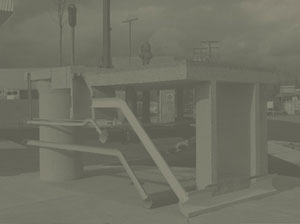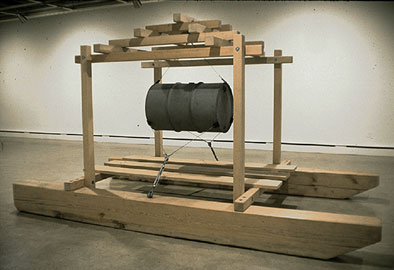In the early part of the 20th century in the forests of the Pacific Northwest, the logging industry developed powerful steam-driven engines attached to massive winches for moving timber out of the woods. These 'donkeys' were mounted on rough timber beds called skidders, so-called because they could be dragged through the woods to the work site, by running cables out from the machine to a big tree and using the winch to draw the skidder forward. Once the skidder was set up at the site, running lines would be rigged from the donkey to the top of a spar tree and out into the cut, to drag felled timber back to the landing.
The oil crises of 1973 and 1979 afforded North American consumers an opportunity to reflect on their petroleum dependency; the 1979 film Mad Max pursued a paranoiacal and apocalyptic meditation on a gasoline-obsessed post-petroleum future. The standard "barrel of oil" metric used in the oil industry is typified by the ubiquitous 45-gallon steel drum and features in both scenarios.
The work Skidder conflates the image of a precious and vanishing resource (oil) with superceded logging technology (the skidder) in a meditation on an unwheeled future, with its suggestion of a return to manual physical labour and fetishistic reverence for sanctified oil.
The blunt, inert and static character of the work's fixed structure is animated by the slow vibrant quiver of the suspended barrel of liquid held in dynamic tension.




Pre-1981

Skidder
1980, Douglas fir, steel, 7'6" X 7' X 13'
1980, Douglas fir, steel, 7'6" X 7' X 13'
gregsnider.ca Copyright © 2007 - Greg Snider.
All Rights Reserved. contact: greg@gregsnider.ca
